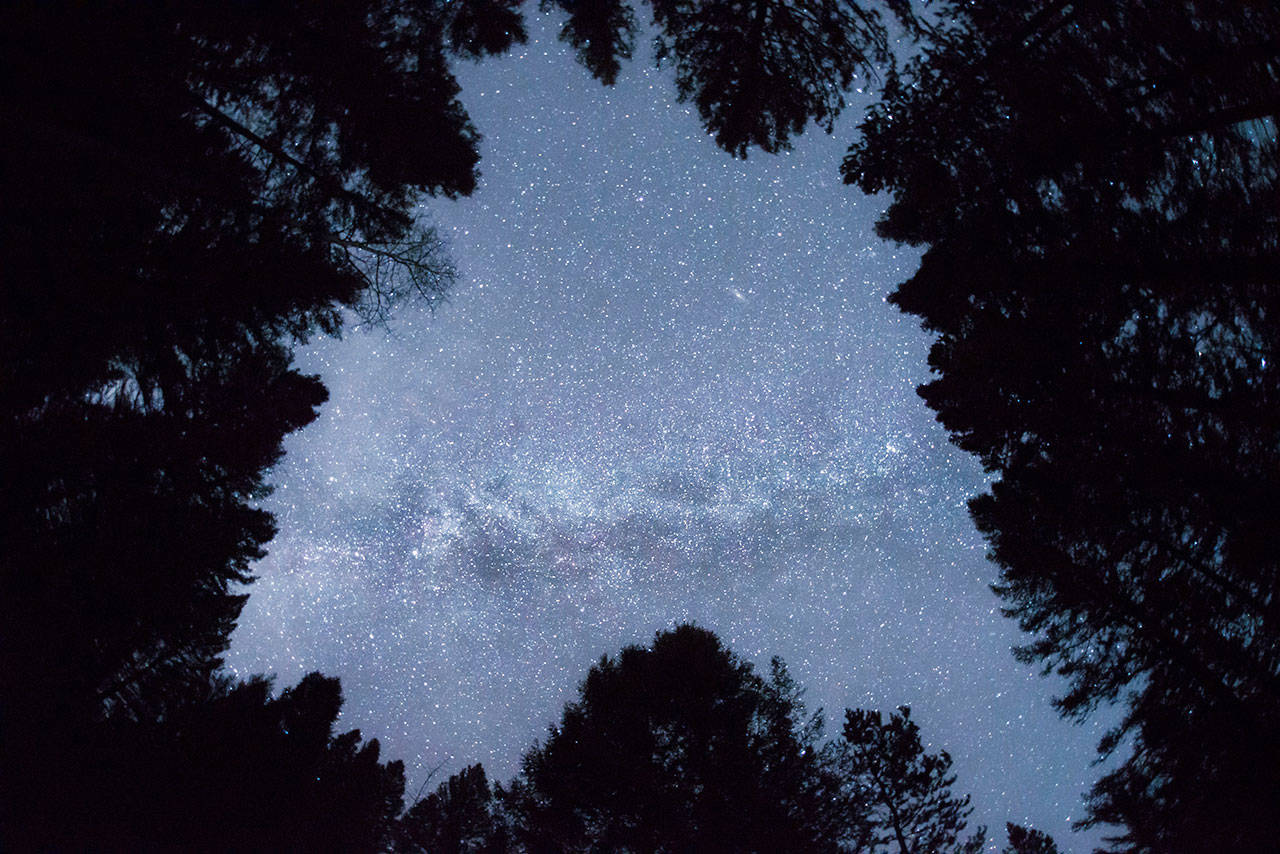By Keith Ridler
The Associated Press
BOISE, Idaho — Tourists heading to central Idaho will be in the dark if local officials get their way.
The first International Dark Sky Reserve in the United States would fill a chunk of the state’s sparsely populated region that contains night skies so pristine that interstellar dust clouds are visible in the Milky Way.
“We know the night sky has inspired people for many thousands of years,” said John Barentine, program manager at the Tucson, Ariz.-based International Dark-Sky Association.
“When they are in a space where they can see it, it’s often a very profound experience.”
Supporters say excess artificial light causes sleeping problems for people and disrupts nocturnal wildlife and that a dark sky can solve those problems, boost home values and draw tourists.
Opposition to dark sky measures elsewhere in the U.S. have come from the outdoor advertising industry and those against additional government regulations.
Researchers say 80 percent of North Americans live in areas where light pollution blots out the night sky. Central Idaho contains one of the few places in the contiguous United States large enough and dark enough to attain reserve status, Barentine said. Only 11 such reserves exist in the world.
Leaders in the cities of Ketchum and Sun Valley, the tiny mountain town of Stanley, other local and federal officials, and a conservation group have been working for several years to apply this fall to designate 1,400 square miles as a reserve.
A final decision by the association would come about 10 weeks after the application is submitted.
The association also designates International Dark Sky Parks, with nearly 40 in the U.S. Craters of the Moon National Monument and Preserve in central Idaho, known as a prime destination among avid stargazers, became one earlier this year.
“There is some astro tourism,” said Ketchum Mayor Nina Jonas, a point driven home last month when thousands descended on the town in the path of the total solar eclipse.
Ketchum officials have applied to become an International Dark Sky Community and join Flagstaff, Ariz., Dripping Springs, Texas, and Beverly Shores, Ind.
The Idaho city approved a dark sky ordinance requiring residents to install shields on exterior light fixtures to block light from going upward and mandating holiday lighting by businesses and residents be turned off at night.
Becoming a dark sky community could help with the larger reserve status and even lift property values in the already pricey area by keeping the night sky visible.
Nearby Sun Valley, a ski resort city, also has a dark sky ordinance, as does Hailey about 12 miles to the south.
“It’s nice to look up and see something greater than ourselves,” Jonas said.
The Idaho Conservation League has joined the effort, noting light pollution can adversely affect nocturnal wildlife and people’s sleep rhythms.
“Out of all the types of pollution that ICL is engaged in, I see this as one we can combat in an easier way,” said Dani Mazzota, whose group is coordinating efforts among federal and local entities.
That includes an intensive effort by volunteers taking darkness readings throughout the region. Those readings, combined with satellite measurements, will be some of the information used by the International Dark Sky-Association in its decision.
International Dark Sky Reserves have two main components, Barentine said. The first is a core area dark enough to meet the association’s standards.
The second is a buffer area with communities that demonstrate support in protecting the core by limiting light pollution.
The proposed Idaho reserve is mainly land managed by the U.S. Forest Service and contains the wilderness of the Sawtooth National Recreation Area.
“We have a preservation and protection mission, and preserving the dark sky and mitigating light pollution is a really good fit for the Sawtooth National Recreation Area,” said ranger Kirk Flannigan.
He said a survey of landowners, livestock grazing permit holders, recreation outfitters, lodges and cabin owners found almost universal support for creating the reserve.
The Forest Service will contribute by putting up informational signs about the dark sky reserve and reducing light pollution from its buildings, Flannigan said.
The agency would not mandate actions, and any light mitigation by others in the recreation area would be voluntary.
Stanley, a tiny mountain town within the Sawtooth recreation area, runs mostly on tourism money.
Its light pollution measures are voluntary but have been effective, not only because they could mean more tourism, but because locals themselves like to see the night sky, said Steve Botti, city council president.
“I go out most every night and look at it because it’s so dramatic,” he said.


